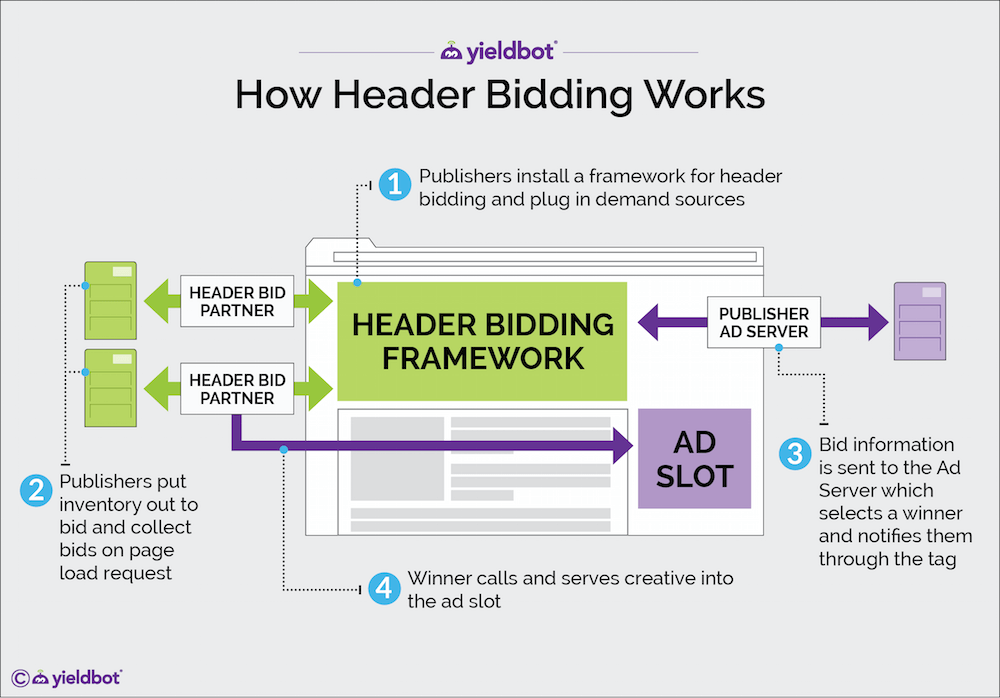mediapost.com

Advertising technology isn’t static. It’s continually evolving and on the move. In ad tech, you can typically count on fairly regular improvements in speed, data and targeting capabilities, reporting, analysis and integration.
These upgrades often come in the form of new product functions and features.
Header bidding is one of those continually evolving processes and technologies. The tech infrastructure that supports it, protocols underlying it, along with header bidding’s growing role in the programmatic ecosystem, make it a complex juggernaut.
It's one that publishers, ad-tech vendors, agencies and advertisers each have a stake in understanding.
With its focus on header bidding, OpenX is showing clients the process' potential and helping them navigate and understand details and infrastructure. It’s closely monitoring the progression, timing and speed of calls to the ad server and watching out for irregularities, including fraud.
Open X, which developed one of the first RTB exchanges, ranked No. 2 in January after Google AdExchange on Pixalate’s list of top sellers in programmatic advertising. For a good part of 2015, OpenX ranked No. 1; Google appeared in the No. 2 slot. The rankings score providers on metrics including reach, quality and viewability.
This is a company that prides itself on customer service and a publisher-centric approach. OpenX looks at a publisher’s programmatic demand configuration to see how it’s performing. And when a header-bidding process launches, OpenX performs discrepancy reporting after the first 24 hours to determine whether to move line items up or down. Its yield team helps publishers optimize at all points throughout the auction process.
Monitoring tools look at the speed and timing of auctions and the success rate of each bid. "We look at the win rate closely--the higher the bid, the more often we win," says Tim Sheets, the company's senior director, monetization.
The ultimate goal, of course, is to increase publishers’ yield.
Through header bidding, OpenX is constantly putting pressure on AdExchange to pay more for the publisher, according to Sheets. While AdExchange gets the so-called “last look” at inventory, OpenX is making it work harder. “We’re not sitting on both the buy and sell sides. We’re focused on the enabling technology that makes the publisher win,” Sheets says.
Header bidding is also allowing publishers to have their direct-sold, rate card inventory sit alongside programmatic inventory. Priority levels can be customized. “We’re trying to get past the sales channel issue some publishers have… Think of header bidding as a delivery method versus a sales process,” Sheets says.
Publishers are beginning to wake up to the fact that header bidding is placing their direct-sold inventory next to every flavor of inventory, so they can see how direct-sold inventory is stacks up.
As more publishers seek to customize and hyper-target audience segments, header bidding can help level the playing field to identify the most valuable inventory.
“For buyers, the benefit of header bidding and programmatic is choice. And they can use programmatic to buy only the inventory they want,” Sheets says.
“We see ourselves as ad server consultants for publishers, and try to take a platform-agnostic view. We want to help publishers create maximum competition for each impression, and we make other exchanges work harder to get the highest price for the inventory,” Sheets says. This dynamic creates maximum competition and levels the playing field for publishers.
If you are looking for an excellent contextual advertising network, I suggest that you try PropellerAds.
ReplyDelete